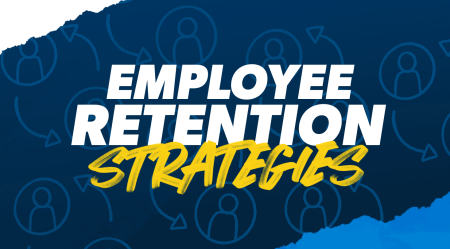As a parent you try to prepare your children for everything you can, make sure financial literacy is at the top of that list. Instilling financial responsibility in children from a young age is more crucial than ever. Financial literacy is an essential life skill that empowers individuals to make informed and effective decisions with their money. By teaching kids about financial responsibility early on, we set the foundation for a future of smart financial behaviors, security, and independence.
 For more resources on financial responsibility go to ConsumerCredit.com.
For more resources on financial responsibility go to ConsumerCredit.com.
The Importance of Early Financial Education
Starting financial education early helps children build a healthy relationship with money. It also reduces the likelihood of financial stress in adulthood. Kids who grow up with a solid grasp of financial principles are better equipped to handle financial challenges and are more likely to achieve long-term financial goals.
Practical Steps to Teach Financial Responsibility
1. Introduce Basic Concepts
Begin by introducing basic financial concepts such as earning, spending, and saving. Use simple language and relatable examples to explain these ideas. For instance, use a piggy bank to demonstrate saving.
2. Allowance and Earning
Consider giving your child a regular allowance to teach the value of earning. Allowances provide practical experience in managing money. To reinforce the concept of earning, tie the allowance to chores or tasks.
3. Create a Budget
Help your child create a simple budget. Break down their allowance into categories such as saving, spending, and giving. This practice teaches them to allocate money wisely and understand the importance of budgeting.
4. Savings Goals
Encourage your child to set savings goals. Whether it’s saving for a toy, a book, a first car, or a special outing, having a goal motivates them to save and teaches delayed gratification. Explain the concept of S.M.A.R.T goals and walk them through it with examples.
5. Lead by Example
It’s no secret that children learn by observing the adults around them. Model good financial behavior by discussing your budgeting, saving, and spending habits. In certain circumstances, show them how you make financial decisions, and involve them in age-appropriate financial discussions. For example, pick the nearest holiday that you celebrate and show your kids how you budget for the upcoming celebration.
6. Educational Tools and Resources
Use educational tools such as books, games, blogs, and apps designed to teach financial literacy. Many resources are tailored for different age groups and can make learning about money fun and engaging. Places like libraries offer free classes to the public, check your local library to see if they have any financial education classes coming up.
Overcoming Challenges
Teaching financial responsibility to children can come with challenges. One common obstacle is the complexity of financial concepts. Simplify these concepts and make them relevant to your child’s daily life.
Another challenge is consistency. Regularly reinforce financial lessons through everyday activities. Involve your child in financial decisions, like planning a family outing within a budget, or comparing prices while grocery shopping.
The Long-term Benefits
The benefits of teaching financial responsibility extend far beyond childhood. Financially literate children grow into adults who are confident in managing their finances. They are better prepared to handle financial challenges, avoid debt, and achieve financial independence.
Financial education fosters critical thinking and problem-solving skills. It also promotes a sense of responsibility and accountability. By understanding the value of money and the impact of their financial choices, children develop a sense of empowerment and control over their financial future.
Encouraging a Growth Mindset
Cultivate a growth mindset in your child by encouraging them to view financial mistakes as learning opportunities. Teach them that it’s okay to make mistakes and that each setback is a chance to improve and grow. This mindset fosters resilience and adaptability, essential traits for navigating the ever-changing financial landscape.
Conclusion
Teaching kids financial responsibility from a young age is an investment in their future and overall financial health. It equips them with the knowledge and skills needed to navigate the complexities of the financial world confidently. By introducing financial concepts early, setting practical examples, and providing consistent guidance, we can empower the next generation to achieve financial security and independence.
Financial responsibility is more than just a necessary skill; it’s a lifelong journey. As parents, educators, and mentors, we have the opportunity to guide our children on this journey, helping them build a bright and financially secure future. Teaching them the basics today ensures a prosperous tomorrow.
If you’re struggling to pay off debt, ACCC can help. Schedule a free credit counseling session with us today.
Read the full article here












